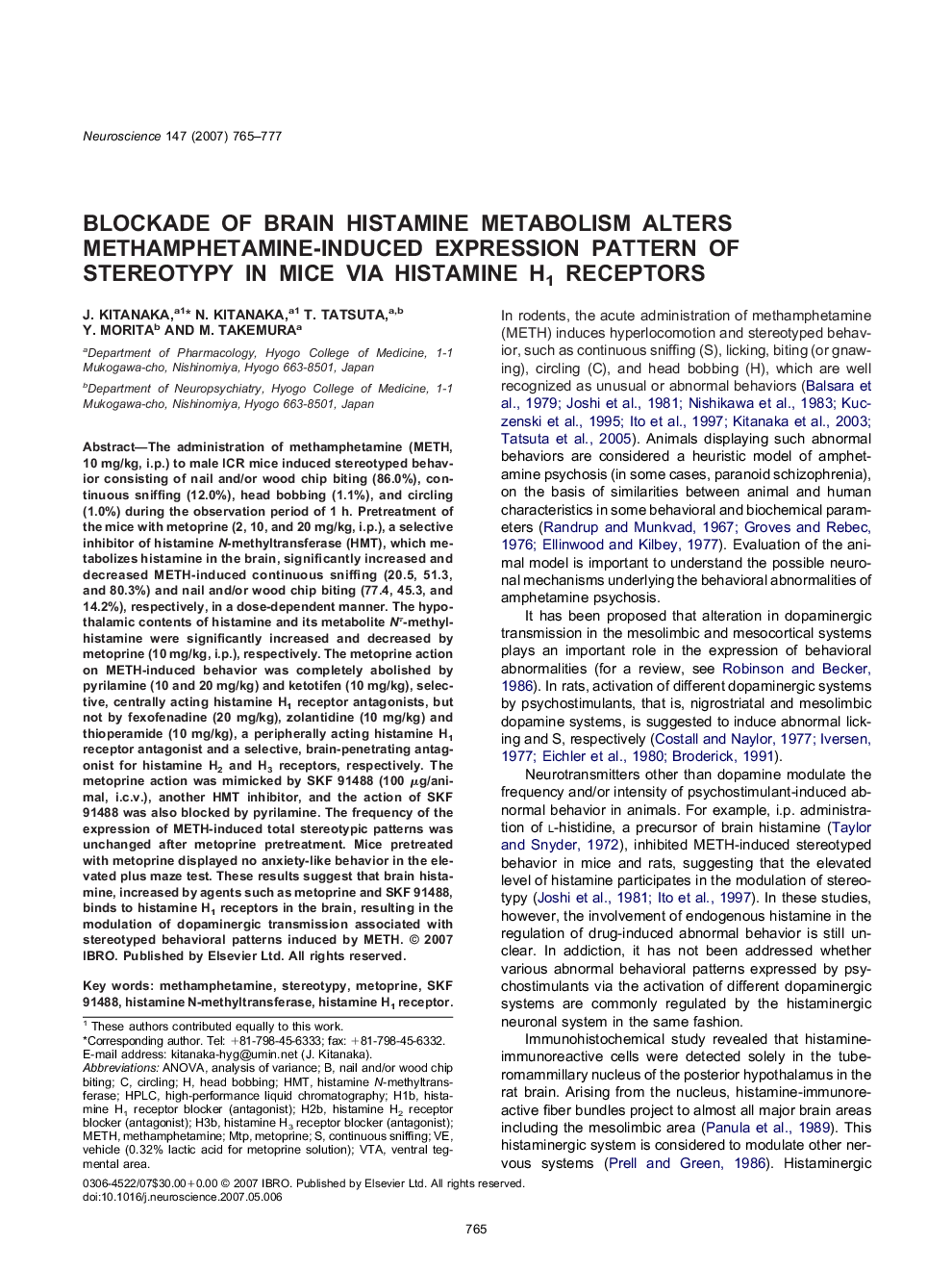| کد مقاله | کد نشریه | سال انتشار | مقاله انگلیسی | نسخه تمام متن |
|---|---|---|---|---|
| 4341484 | 1295837 | 2007 | 13 صفحه PDF | دانلود رایگان |
عنوان انگلیسی مقاله ISI
Blockade of brain histamine metabolism alters methamphetamine-induced expression pattern of stereotypy in mice via histamine H1 receptors
دانلود مقاله + سفارش ترجمه
دانلود مقاله ISI انگلیسی
رایگان برای ایرانیان
کلمات کلیدی
VTAMTPhMTH2Banalysis of variance - تحلیل واریانسANOVA - تحلیل واریانس Analysis of varianceMETH - متهMetoprine - متپرینMethamphetamine - متیل آمفتامینventral tegmental area - ناحیه تگمنتوم شکمیHistamine N-methyltransferase - هیستامین N-متیل ترانسفرازHPLC - کروماتوگرافی مایعی کاراhigh-performance liquid chromatography - کروماتوگرافی مایعی کاراStereotypy - کلیشهCircling - گردن زدنhistamine H1 receptor - گیرنده هیستامین H1
موضوعات مرتبط
علوم زیستی و بیوفناوری
علم عصب شناسی
علوم اعصاب (عمومی)
پیش نمایش صفحه اول مقاله

چکیده انگلیسی
The administration of methamphetamine (METH, 10 mg/kg, i.p.) to male ICR mice induced stereotyped behavior consisting of nail and/or wood chip biting (86.0%), continuous sniffing (12.0%), head bobbing (1.1%), and circling (1.0%) during the observation period of 1 h. Pretreatment of the mice with metoprine (2, 10, and 20 mg/kg, i.p.), a selective inhibitor of histamine N-methyltransferase (HMT), which metabolizes histamine in the brain, significantly increased and decreased METH-induced continuous sniffing (20.5, 51.3, and 80.3%) and nail and/or wood chip biting (77.4, 45.3, and 14.2%), respectively, in a dose-dependent manner. The hypothalamic contents of histamine and its metabolite NÏ-methylhistamine were significantly increased and decreased by metoprine (10 mg/kg, i.p.), respectively. The metoprine action on METH-induced behavior was completely abolished by pyrilamine (10 and 20 mg/kg) and ketotifen (10 mg/kg), selective, centrally acting histamine H1 receptor antagonists, but not by fexofenadine (20 mg/kg), zolantidine (10 mg/kg) and thioperamide (10 mg/kg), a peripherally acting histamine H1 receptor antagonist and a selective, brain-penetrating antagonist for histamine H2 and H3 receptors, respectively. The metoprine action was mimicked by SKF 91488 (100 μg/animal, i.c.v.), another HMT inhibitor, and the action of SKF 91488 was also blocked by pyrilamine. The frequency of the expression of METH-induced total stereotypic patterns was unchanged after metoprine pretreatment. Mice pretreated with metoprine displayed no anxiety-like behavior in the elevated plus maze test. These results suggest that brain histamine, increased by agents such as metoprine and SKF 91488, binds to histamine H1 receptors in the brain, resulting in the modulation of dopaminergic transmission associated with stereotyped behavioral patterns induced by METH.
ناشر
Database: Elsevier - ScienceDirect (ساینس دایرکت)
Journal: Neuroscience - Volume 147, Issue 3, 13 July 2007, Pages 765-777
Journal: Neuroscience - Volume 147, Issue 3, 13 July 2007, Pages 765-777
نویسندگان
J. Kitanaka, N. Kitanaka, T. Tatsuta, Y. Morita, M. Takemura,